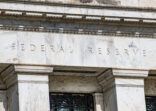Low interest rates and room for further upside in the Indonesian rupiah versus the US dollar should bolster local currency sovereign bonds, Tan told Fund Selector Asia.
“What happened is that in Indonesia, both the bond market and the currency are doing really well. There are some instances that your bond market does well but your currency depreciates. That gives you either a breakeven situation or a loss situation.
“Fundamentally, we thought the currency should strengthen because it was stretched. From an interest rate perspective, the interest rates were very high and they are poised to come down because the economy is slowing,” Tan said.
So far in 2016, the Indonesian rupiah has strengthened against the US dollar. The stablisation of the currency is a catalyst and the Central Bank of Indonesia has cut interest rates three times.
Tan said the outlook remains positive for Indonesia. “We remain nimble. That’s the key point. In the last six months, sentiment, valuation and technicals are more the drivers of the market than fundamentals. Fundamentals are slighlty improving but not significantly.
He is overweight Indonesian sovereign bonds. An allocation to Indonesia is warranted because the country is fundamentally improving through structural reforms, he said.
Indonesia experienced massive capital flight in 2013 during the Taper Tantrum, when the US Federal Reserve started talking about tapering its asset buying programme.
Indonesia’s currency and equity market plunged and the country became known as one of the “fragile five” (together with India, South Africa, Brazil and Turkey), meaning those economies with a strong reliance on foreign capital.
Today the country is in better fiscal shape. This year, the market had a weak start, like most other global markets, but for the full quarter has an 11% gain, FE data shows.
Indonesian equities are also expected to outperform this year, according to Baring Asset Management.

Source: FE Analytics
Risk from the US
Apart from Indonesia, Tan is also positive on some other Asian currencies.
“The sentiment has turned positive as the dollar has weakened. So, it is positive for Asian fixed income as a whole on the currency side and the credit side.”
He said the firm for the past month has been overweight some of the Asian currencies, such as the South Korean won, the Malaysian ringgit and the Singapore dollar. “They are high-beta currencies where we capitalise on high movements and sentiment.”
There are tactical opportunities in Asian currencies, he said.
Asian currencies were selling off at the beginning of 2016, but they have since rebounded. “Even an oil-producing country like Malaysia, which had a currency that was underperforming quite badly, has become one of the best performers.”
A bigger-than-expected rate hike in the US is expected to be a major risk for the Asian fixed income market, he said.
“The market is expecting a one-quarter basis-point [rate hike] toward the end of the year, or a maximium 50 basis-point hike, so that’s not going to be detrimental if that happens. But if we get something else, then I think it will be a different story.”

















